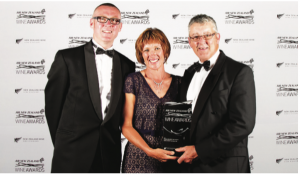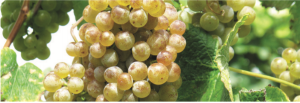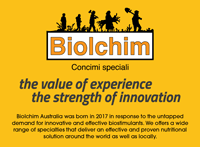By Doug Bell, grapegrower, and Simon Nunns, winemaker, Coopers Creek, Kumeu, New Zealand
First published in the July/August 2014 issue of the Wine & Viticulture Journal

In 1989, the CSIRO imported into Australia what was believed to be Albariño from the National Germplasm Collection in Spain. Twenty years later, DNA profiling confirmed this planting material was, in fact, Savagnin Blanc – a rude shock given it had been the source of Albariño for most of the growers in Australia who believed they were producing it. With Australia’s experience in making genuine Albariño in its infancy, we looked across the Tasman to hear about Coopers Creek’s experience with the variety, having made some award-winning wines from it.
The grapegrower’s view – Doug Bell
In 2002 my wife Delwyn and I visited the Barossa Valley and attended the Viognier Conference at Yalumba.
Viognier was a new variety in Gisborne and we wanted to learn as much as we could from the masters, and also try the range of Viognier wines from around the world. Viognier was important to us, as it was the first of a range of new and interesting varieties we had decided to plant in our vineyard.
We had developed a series of ‘tick boxes’ beside each of the criteria we felt were important in choosing the varieties we would plant. The list included:
- produces wine we enjoy
- is respected by wine critics
- is unusual or rare
- withstands wet weather reasonably well
- has a good association with seafood, or matches it well.
Albariño ticked all the boxes! So, while at the conference we spoke with nurseries prepared to supply some buds, which we planned to import through the NZ Government’s quarantine service.
Seven years would elapse before we got plants to put in the ground. In the interim, Australia’s Albariño was found to be not Albariño, instead a rogue vine but very similar. My immediate reaction was to have the nursery assure us we had actually got the real deal. DNA tests proved it to be Albariño and in doing so we became the first to plant the variety in Australasia (I believe the first in the Southern Hemisphere).
Albariño is a very different vine to grow. With four vintages now under our belt we are still learning very fast how we should deal with such a vigorous and strong willed teenager. Our efforts to restrict vigour have been successful but have involved methods such as companion-planting fescue and, now, saying no to herbicides to allow weeds to compete for water and nutrients.
We feel it is important to load the vine with crop as another means of getting the vine to work harder and maintain a reasonable bud internode distance.
Albariño has very strong laterals and these will produce ‘second set’ bunches.
The primary bunches have a habit of producing not only the bunch of fruit but frequently a lateral, often with a later set bunch attached. We remove these before harvest.
Harvest time is early, similar to young Chardonnay, and it appears to stand up well to wet weather, with thick skins and many seeds in a small berry. Bunches tend to be reasonably open in structure, but we still go to the bother of removing leaves in the fruit zone (and will also remove laterals this next year) to assist with drying and sprayer efficacy.
We feel lucky to be associated with Coopers Creek who, over many years have become friends as well as business associates. Their enthusiasm for trying new varieties matches ours and to date they have done well in all the shows entered, which is what we both set out to do. That is, produce the very best fruit and wine so the public’s reaction is “wow!”
The winemaker’s view – Simon Nunns
Coopers Creek considers itself to be very lucky to be associated with Doug and Delwyn Bell. We share their enthusiasm for the new and the unusual, and we are also in awe of their abilities as grapegrowers. For some years now, Coopers Creek has been actively pursuing alternate cultivars. Thus far, we have been the first winery in New Zealand to market Arneis, Gruner Veltliner, Albariño, Marsanne and (soon) Vermentino. Thus far we have had excellent success with Albariño. The 2012 and 2013 vintages have collectively amassed nine gold medals and six trophies in wine shows.
Albariño has a number of things going for it. It handles bad vintages (2012) and good vintages (2013 and 2014) with aplomb. It handles rain well, and as Doug said, is a relatively early ripener.
It produces wines with clearly definable flavours and these wines are a great match with all types of seafood. Also, it has a name that people can say without tuition. I believe that this last point is very important. Wine drinkers do not want to appear to be ill-educated, and I believe that if people are confronted with a grape variety that they can’t say, then many people will simply choose something else.
Winemaking
The fruit is hand harvested into 400kg slotted bins. These bins are sent overnight on chiller transport to arrive in Auckland early the following morning. The fruit is whole bunch pressed and we have done a press cut for the last two years. The juice is settled with a fining agent and racked clean a few days later. Ferment has been conducted with Enartis Ferm Aroma White and the ferments have usually shown some sulfide production. The wines have been sulfured at dryness and bottling has usually been relatively early (April in 2013 and June in 2014). Residual sugar has been in the 4-8g/L range.
A lot of our thinking of late has been whether or not it is worthwhile including a pressings component in the finished wine. With Albariño, more so than any other cultivar we deal with, there is a striking difference between the free run and pressings parcels. The pressings do have a lot of flavour, but this is offset with very high levels of phenols and a strong suspicion that wines containing a pressings component age much more quickly than those made just from free run. In 2013 and 2014 our Select Vineyard Gisborne Albariño has been made from free run parcels only.
The acid structure in the finished wines seems to sit somewhere between Sauvignon Blanc and Riesling. The 2014 wine is going to bottle with a pH of 3.30 and a TA of 7.7g/L. The wines have a distinct acid backbone, which makes them great with seafood and enjoyable in summer.
ALBARIÑO

By Peter Dry, Emeritus Fellow, The Australian Wine Research Institute
Background
Albariño (AHL-bah-REEN-yoh) or Alvarinho originated in Galicia in north-west Spain or in northern Portugal. The high degree of phenotypical diversity of Albariño in north-west Iberia suggests that it is an old variety. In Spain both Albariño and Albarin Blanco (a different variety) have been mistaken for Savagnin (Blanc)—but they are not related, based on DNA analysis. It is possible that there is some Savagnin grown as Albariño in Galician vineyards. Synonyms include Albelleiro, Alvarin Blanco, Azal blanco, Galego, Galeguinho and Paderña. Alvarinho is the preferred international prime name. Globally there were 5523 ha in 2010 (up 8% from 2000), 64% in Spain and 36% in Portugal. In Spain it is very important in Galicia (particularly in the Rias Baixas DO) and Cantabria. There has also been much recent expansion in Portugal where it is more widely planted: mainly in the Minho in the north but also further south in Ribatejo, Dao and Setubal. There are small areas in Uruguay, Argentina, USA (52 ha in California where it was planted in the early 2000s; Oregon, Washington and Virginia) and New Zealand (first planted in 2009 with clones sourced from Portugal). Most people in the Australian wine industry are aware that the initial introduction of Albariño to Australia was actually Savagnin. True Albariño has been introduced in recent years and is now available from nurseries. In Australia there are currently at least 3 wine producers.
Viticulture
Budburst is early to mid-season (two weeks after Chardonnay in California) and ripening is early (similar to Chardonnay in California). Bunches are small and compact with small thick-skinned berries. Vigour is high. Yield is low to moderate. Spur pruning can be used although cane pruning is most common. It is tolerant of Botrytis bunch rot due to its tough skin but susceptible to powdery and downy mildews. Bunches are sensitive to sunburn and it is prone to ‘second crop’. It is adapted to sites with fertile soils and high growing season rainfall. In north-west Iberia it has been traditionally grown on an expansive pergola system; but there are now some newer vineyards with VSP.
Wine
In Spain, most wine is single variety. In Portugal it is often blended with Loureiro (a close relative) and Trajadura—as in the Vinho Verde DOC. It may also be used for sparkling wine. The best wines are aromatic, combining fruity and floral characters, have fresh acidity and firm structure. Descriptors include orange blossom, honeysuckle, apricot, peach, pome fruit and melon. If harvested at relatively low Brix, there is more citrus with crisp freshness; at higher Brix, wines are more like Viognier with apricot and peach with full body.





















